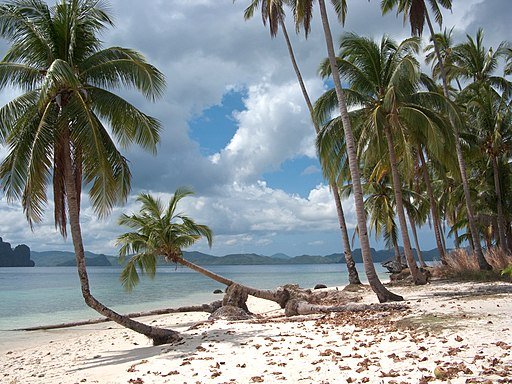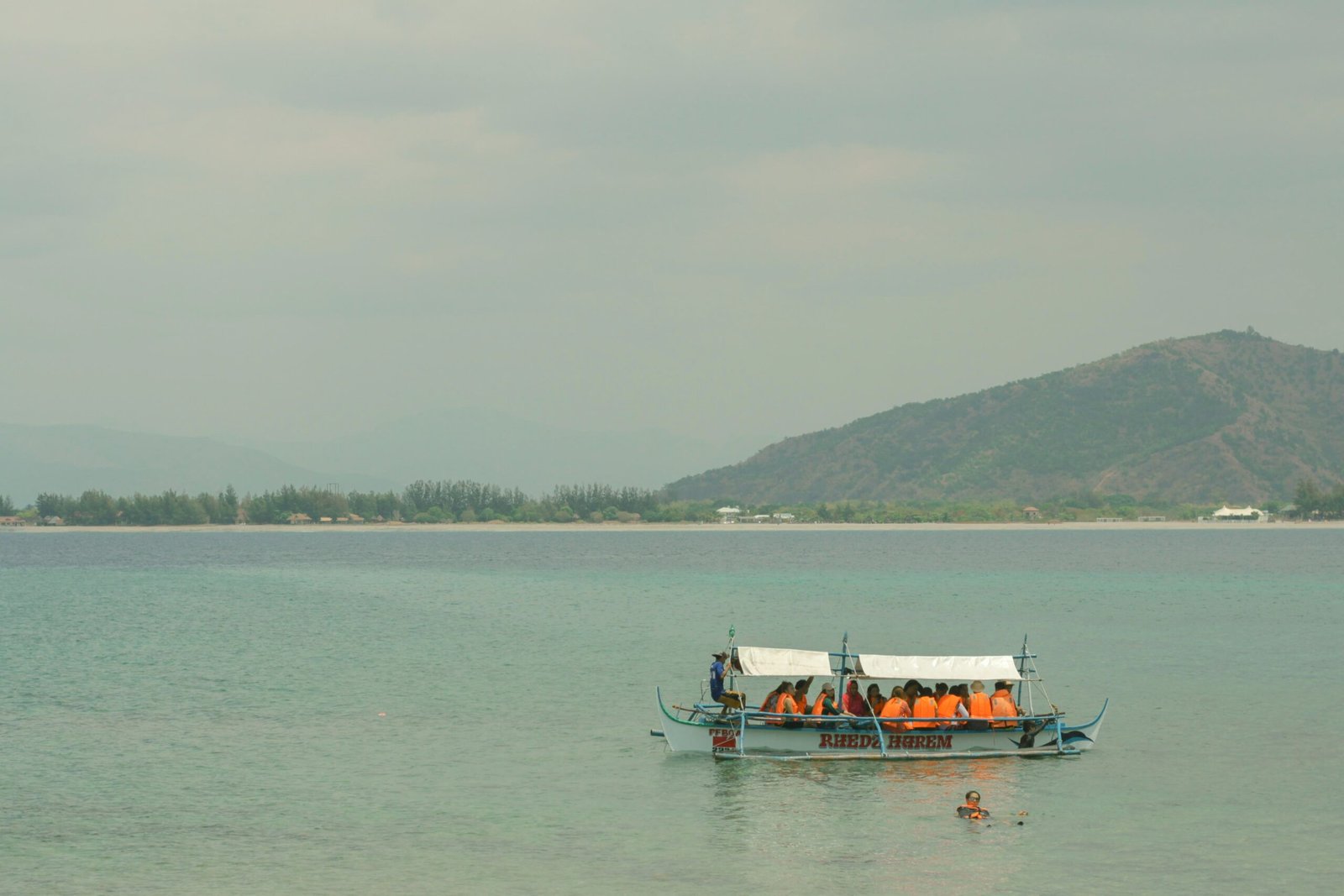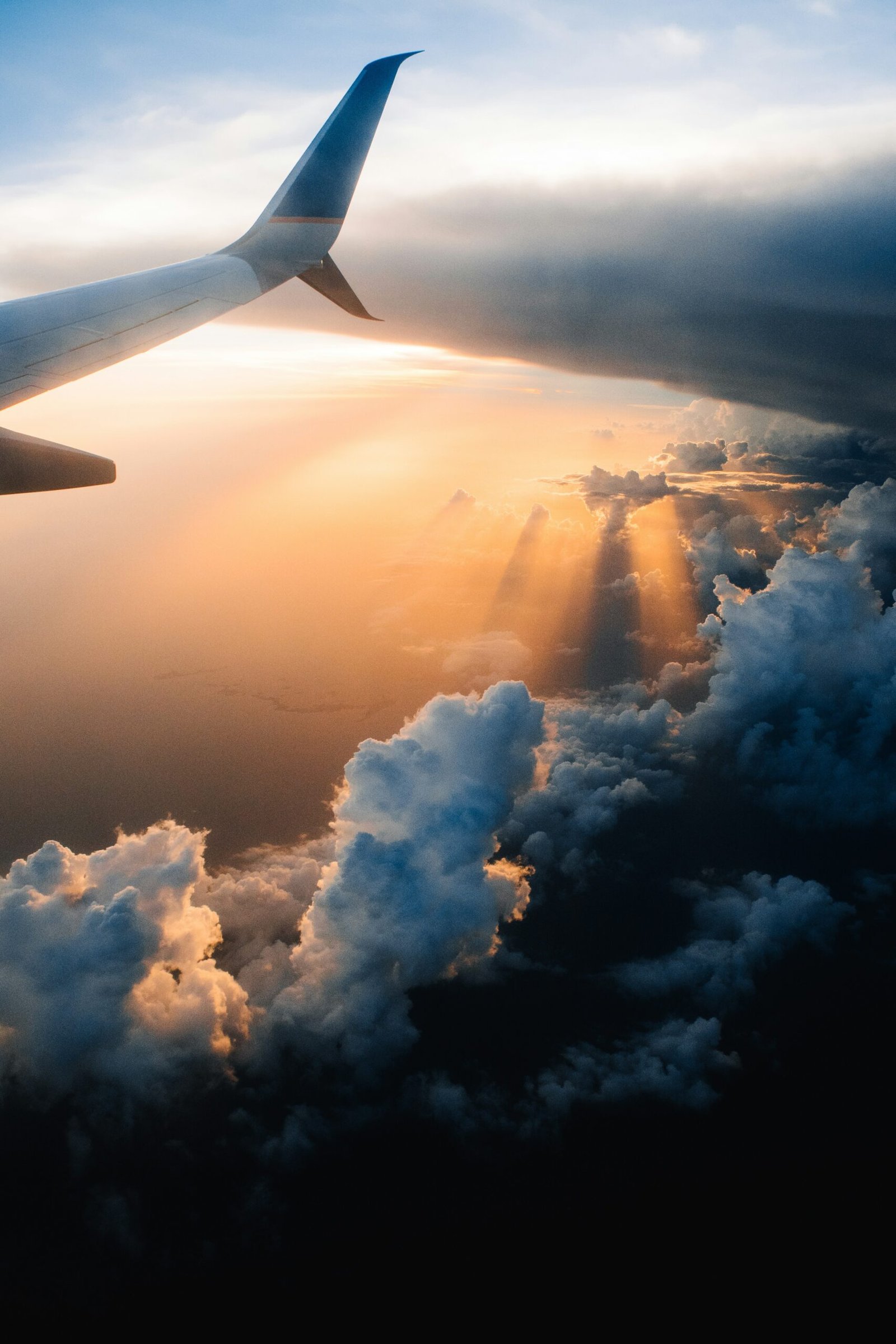
Introduction to the Philippines’ Beaches
The Philippines, an archipelago comprising over 7,000 islands, stands as one of the premier beach destinations in the world. This Southeast Asian nation offers a unique combination of geographical features that make it a haven for beach enthusiasts. With its extensive coastline, the country boasts a diverse array of beaches, each offering a distinct experience. From powdery white sands to rugged coastlines, the Philippines’ beaches cater to all kinds of travelers, making it a truly versatile destination.
A significant draw for visitors is the tropical climate, characterized by warm temperatures and ample sunshine throughout the year. This climate ensures that the beaches are accessible and enjoyable year-round, making it an excellent destination for both summer holidays and winter escapes. The crystal-clear waters surrounding these islands are not only visually stunning but also provide the perfect setting for various water activities. Whether it’s swimming, snorkeling, diving, or simply lounging by the shore, the pristine waters of the Philippines offer endless opportunities for relaxation and adventure.
Furthermore, the marine life in the Philippines is incredibly diverse and vibrant. The coral reefs, teeming with colorful fish and other marine creatures, are among the most biodiverse in the world. This makes the Philippines a top choice for diving enthusiasts and marine biologists alike. The underwater landscapes are as captivating as the beaches themselves, offering a glimpse into a thriving ecosystem that is both beautiful and vital to the planet’s health.
In addition to the natural beauty, the welcoming and hospitable nature of the Filipino people adds to the charm of visiting the Philippines’ beaches. The local culture, rich in history and tradition, enhances the overall experience, making a trip to the Philippines not just a beach getaway, but a culturally enriching adventure. With so much to offer, it is no wonder that the Philippines continues to be a top destination for beach lovers from around the globe.
Boracay: The Crown Jewel
Boracay stands as one of the most renowned beaches in the Philippines, a true tropical paradise that captivates both local and international tourists. Its most iconic feature, White Beach, stretches for four kilometers with its powdery white sand and crystal-clear, turquoise waters. This picturesque setting creates an idyllic backdrop for relaxation and a myriad of water activities, including snorkeling, scuba diving, and paddleboarding.
Beyond the stunning shores, Boracay is celebrated for its vibrant nightlife. As the sun sets, the island transforms into a lively hub of entertainment. Bars, clubs, and beachfront restaurants come alive with music, dance, and a wide array of culinary delights, making it an ideal destination for those seeking both tranquility and excitement.
Recent rehabilitation efforts have been instrumental in preserving Boracay’s natural beauty. Initiated in 2018 by the Philippine government, these efforts aimed to address environmental concerns, ensuring that the island remains a pristine getaway for future generations. These measures have successfully restored the island’s ecosystems and improved waste management practices, making Boracay more sustainable and eco-friendly.
Among the prominent spots in Boracay, White Beach remains the most popular. However, Puka Shell Beach offers a more secluded experience, known for its coarse, shell-laden sands and serene ambiance. On the other hand, Bulabog Beach is a haven for water sports enthusiasts, particularly famous for windsurfing and kiteboarding due to its strong winds and waves.
For those planning a visit, the best times to explore Boracay are during the dry season, from November to April, when the weather is pleasant, and the sea conditions are perfect for beach activities. Whether you seek adventure, relaxation, or a vibrant social scene, Boracay, with its stunning landscapes and diverse offerings, truly exemplifies the allure of Philippines beaches.
El Nido: A Scenic Escape
El Nido, located in the northern part of Palawan, is renowned for its breathtaking landscapes, marked by dramatic limestone cliffs, hidden lagoons, and pristine beaches. This tropical paradise offers an array of stunning locations that epitomize the beauty of Philippines beaches. Among these, Nacpan Beach stands out with its long stretch of golden sand, crystal-clear waters, and swaying palm trees, creating an idyllic setting for relaxation and sunbathing.
Another must-visit spot in El Nido is Seven Commandos Beach, a secluded haven accessible only by boat. This beach is perfect for those seeking tranquility, with its powdery white sand and azure waters inviting guests to unwind and soak in the natural beauty. Furthermore, the Big Lagoon is a highlight of El Nido’s island-hopping tours. Enclosed by towering limestone formations, this lagoon offers a unique opportunity for kayaking and exploring its serene, emerald waters.
El Nido is not just about picturesque beaches; it also offers a plethora of activities for adventure enthusiasts. Snorkeling and diving are among the top attractions, thanks to the rich marine biodiversity and vibrant coral reefs surrounding the area. Visitors can expect to encounter colorful fish, sea turtles, and other fascinating underwater creatures. Island-hopping tours are also a staple experience in El Nido, providing a chance to discover hidden gems and lesser-known islands that boast pristine beaches and scenic views.
Whether you are seeking relaxation or adventure, El Nido’s diverse offerings make it a premier destination for exploring the best of Philippines beaches. Its natural beauty and array of activities ensure that every visitor leaves with unforgettable memories of this tropical paradise.
Siargao: The Surfing Mecca
Siargao, often hailed as the Philippines’ surfing capital, attracts wave enthusiasts from around the globe. The island’s crown jewel, Cloud 9, is renowned for its powerful, world-class waves, making it a premier destination for both seasoned surfers and ambitious beginners. Each year, the island hosts the Siargao Cup, a prestigious surfing competition that draws international athletes and spectators, adding an electrifying buzz to the otherwise tranquil island life.
Beyond its surfing fame, Siargao offers a plethora of stunning beaches that cater to various tastes. General Luna Beach, with its powdery white sand and crystal-clear waters, is perfect for those looking to unwind and soak up the sun. The beach’s laid-back vibe is complemented by numerous beachfront bars and restaurants, where visitors can enjoy fresh seafood and tropical cocktails.
For a more secluded escape, Daku Island, one of the three popular islands of the Siargao group, provides a serene retreat. Its unspoiled shoreline, fringed with coconut palms, offers a picturesque setting ideal for picnics, swimming, and snorkeling. The island’s calm and inviting waters are perfect for a relaxing day away from the crowds.
The charm of Siargao extends beyond its beaches. The island embodies a perfect blend of adventure and relaxation, making it a versatile destination. Whether it’s exploring hidden lagoons, indulging in yoga sessions, or simply lounging by the beach, Siargao promises an enriching experience. Its laid-back atmosphere, combined with the thrill of surfing and the beauty of its beaches, cements Siargao’s status as a must-visit spot in any Philippines beaches itinerary.
Bohol: Serenity and Natural Wonders
Bohol, an island province in the Philippines, is renowned for its serene beaches and mesmerizing natural attractions. Among its pristine shores, Alona Beach stands out with its powdery white sand and crystal-clear waters, making it a haven for both relaxation and aquatic activities. Alona Beach is also a hotspot for diving and snorkeling enthusiasts, with its vibrant coral reefs teeming with marine life.
Another gem, Dumaluan Beach, offers a more tranquil alternative. Known for its expansive shoreline and gentle waves, Dumaluan Beach is ideal for leisurely strolls and family gatherings. The serene ambiance of Dumaluan allows visitors to unwind and bask in the natural beauty of the Philippines beaches.
Bohol’s allure extends beyond its picturesque beaches to its unique inland attractions. The Chocolate Hills, a geological formation of over a thousand conical hills, transform into a rich chocolate brown during the dry season, creating a surreal landscape. These hills provide a striking contrast to the island’s lush greenery and are a must-visit for any traveler.
Another notable attraction is the Tarsier Sanctuary, home to the Philippine tarsier, one of the world’s smallest primates. Visitors can observe these nocturnal creatures in their natural habitat, promoting eco-tourism and conservation efforts. The sanctuary offers an educational experience, highlighting the importance of preserving Bohol’s unique biodiversity.
The balance between beach activities and eco-tourism makes Bohol a perfect destination for nature lovers. Whether you are lounging on the beach or exploring the island’s natural wonders, Bohol offers a harmonious blend of relaxation and adventure. Its serene beaches and captivating attractions make it a standout destination among the many beautiful beaches in the Philippines.
Cebu: A Blend of History and Beach Bliss
Cebu, a province in the Philippines, is a remarkable destination where history and beach bliss seamlessly intertwine. This tropical haven boasts an array of pristine beaches that promise both relaxation and adventure. Mactan Island, one of Cebu’s most popular beach destinations, is renowned for its white sandy shores and crystal-clear waters. It is an ideal spot for water sports enthusiasts, offering activities such as snorkeling, jet-skiing, and parasailing. For those seeking a more tranquil experience, lounging on the beach or exploring the vibrant marine life is equally rewarding.
Another gem in Cebu is Malapascua Island, famed for its unique dive sites. It is one of the few places in the world where divers can encounter the elusive thresher sharks. The island’s underwater biodiversity is astounding, featuring colorful coral reefs and a plethora of marine species. Beyond diving, the serene beaches of Malapascua provide an idyllic setting for sunbathing and relaxation.
Cebu’s appeal extends beyond its beaches. The province is steeped in rich cultural heritage and historical landmarks. A visit to the historic Magellan’s Cross in Cebu City is a must. Planted by Portuguese and Spanish explorers in 1521, this iconic landmark symbolizes the advent of Christianity in the Philippines. The nearby Basilica Minore del Santo Niño, which houses the oldest religious relic in the country, further adds to Cebu’s historical allure.
The vibrant city life of Cebu City complements its historical and natural attractions. The city is a bustling hub of commerce, cuisine, and culture. Visitors can explore local markets, indulge in Cebu’s famous lechon (roast pig), or enjoy the lively nightlife. The fusion of urban excitement and beach tranquility makes Cebu an exceptional destination.
Ultimately, Cebu offers a unique mix of relaxation and cultural exploration. Its beautiful beaches, rich history, and dynamic city life create a multifaceted experience that caters to a diverse range of interests. Whether you are diving with thresher sharks in Malapascua, soaking up the sun on Mactan Island, or delving into the province’s historical landmarks, Cebu stands out as a top destination in the Philippines.
Palawan: The Last Frontier
Palawan, often referred to as the ‘Last Frontier’ of the Philippines, offers a treasure trove of natural wonders that extend well beyond the popular destination of El Nido. This pristine region is renowned for its untouched beauty and is home to some of the most captivating beaches in the Philippines. Among its many attractions, Coron and Puerto Princesa stand out as must-visit destinations.
Coron is a paradise for diving enthusiasts, famed for its shipwreck diving sites. The waters around Coron are home to numerous World War II Japanese shipwrecks, now teeming with marine life. These underwater relics provide a unique diving experience, blending history with the vibrant aquatic ecosystem. Additionally, Coron boasts the stunning Kayangan Lake, often dubbed the cleanest lake in Asia. Its crystal-clear waters surrounded by dramatic limestone cliffs offer a serene escape. The Twin Lagoon, another highlight, features two lagoons separated by a narrow crevice, accessible by swimming or kayaking, offering an idyllic spot for exploration.
Puerto Princesa, the capital city of Palawan, is another gem that shouldn’t be missed. The city’s Underground River, a UNESCO World Heritage site, is a marvel of nature. This subterranean river winds through a series of majestic limestone caves, creating a surreal underground landscape. Guided tours offer visitors the chance to witness stunning formations of stalactites and stalagmites, as well as the unique ecosystem that thrives in the darkness. This natural wonder has garnered international acclaim and stands as a testament to Palawan’s rich biodiversity.
Palawan’s reputation as the ‘Last Frontier’ is well-deserved, thanks to its untouched beaches, crystal-clear waters, and diverse marine life. Whether you’re exploring the depths of Coron’s shipwrecks or marveling at the subterranean beauty of Puerto Princesa’s Underground River, Palawan promises an unforgettable experience that highlights the unparalleled beauty of the Philippines’ beaches.
Tips for Traveling to the Philippines’ Beaches
Planning a trip to the Philippines’ beaches can be an exciting yet overwhelming experience. To make the most of your tropical getaway, it’s essential to consider several key factors. The best time to visit the Philippines is during the dry season, typically from November to April, when the weather is most favorable for beach activities. However, if you prefer fewer crowds, the shoulder months of May and October offer a balance of decent weather and reduced tourist influx.
Before embarking on your journey, ensure you have the necessary travel documents. Most visitors from Western countries can enter the Philippines visa-free for stays of up to 30 days. However, it’s advisable to check the specific visa requirements based on your nationality. Additionally, having a valid return or onward ticket is often a requirement for entry.
Packing for a trip to the Philippines’ beaches should include essentials such as breathable clothing, swimwear, sunblock, and insect repellent. It’s also advisable to bring a reusable water bottle to stay hydrated and reduce plastic waste. For island-hopping adventures, a dry bag and waterproof phone case can protect your belongings and gadgets.
Transportation between the numerous islands in the Philippines is mainly by ferries or domestic flights. Ferries are a cost-effective option and offer scenic views, while flights are faster but may be subject to weather conditions. It’s important to book tickets in advance, especially during peak seasons, to secure your preferred travel dates and times.
Understanding local customs and practicing respectful behavior is crucial. Filipinos are known for their hospitality, and a warm smile or a simple “Salamat” (thank you) can go a long way. When visiting beaches, be mindful of the environment. Practice sustainable tourism by avoiding single-use plastics, participating in beach clean-ups, and respecting marine life. This helps preserve the natural beauty of the Philippines’ beaches for future generations.
Lastly, prioritize safety by following local guidelines, staying informed about weather conditions, and having travel insurance. With these tips in mind, your trip to the Philippines’ beaches will be both enjoyable and responsible, allowing you to fully appreciate this tropical paradise.
Giovanni Carlo P. Bagayas is a seasoned travel guide and passionate explorer from the Philippines. With years of experience uncovering the hidden gems of his homeland, Giovanni has dedicated his career to showcasing the beauty, culture, and adventure that the Philippines has to offer. As the author of Best Philippines Travel Guide, he combines his expertise and love for travel to provide insightful tips, detailed itineraries, and captivating stories for travelers seeking unforgettable experiences in the Philippines. Giovanni’s mission is to inspire wanderlust and help visitors discover the true essence of his vibrant country.


